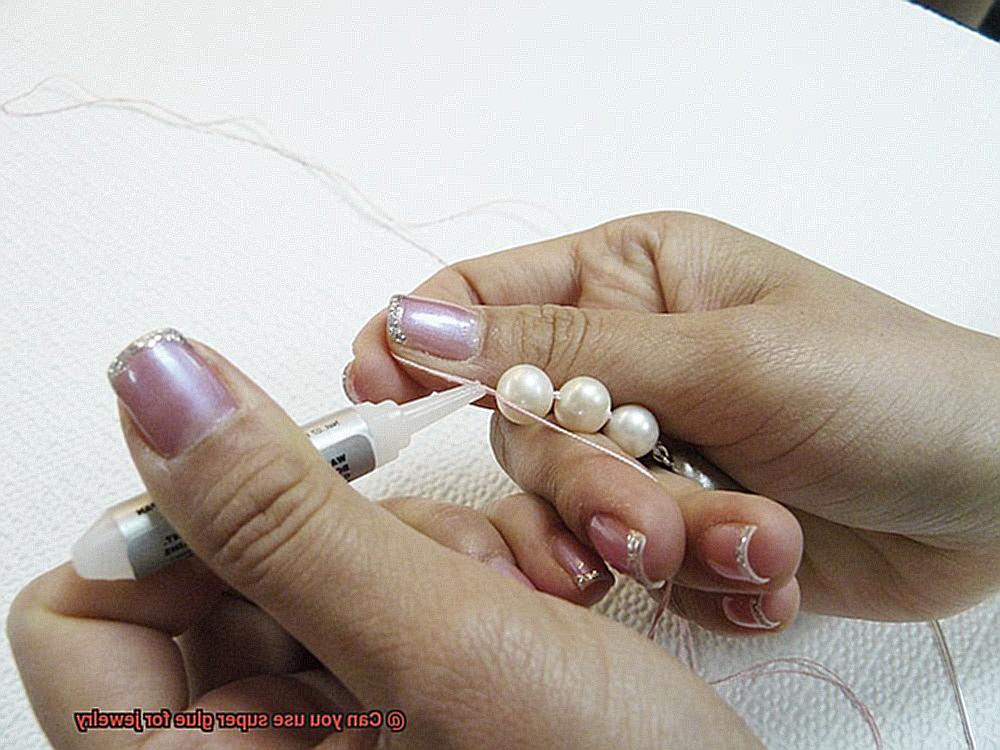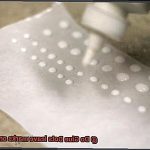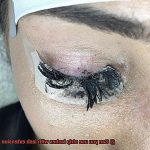Ever had that heart-sinking moment when your beloved jewelry suddenly snaps? We’ve all been there, frantically searching for a quick fix. Enter super glue, our trusty hero in a tiny tube. But before you go dashing to the craft store, let’s weigh the pros and cons of using this sticky savior for your precious gems. In this blog post, we’ll dig deep into this DIY solution, uncovering its effectiveness, potential pitfalls, and some pro tips for flawless application. So grab a seat, my fellow sparkle addicts, as we unveil the truth about using super glue for your jewelry.
Types of Jewelry Suitable for Super Glue
Contents
- 1 Types of Jewelry Suitable for Super Glue
- 2 Intended Use of the Jewelry
- 3 Preparing the Jewelry for Adhesive Application
- 4 Applying Super Glue to Jewelry
- 5 Allowing Adequate Curing Time
- 6 Pros and Cons of Using Super Glue on Jewelry
- 7 Professional Assistance for Complex Repairs
- 8 Tips for Successful Super Glue Bonding
- 9 Conclusion
When it comes to repairing or modifying your beloved jewelry, finding the right adhesive is crucial. Super glue, with its fast-acting and powerful bonding properties, seems like a tempting choice. But before you dive in, let’s explore the types of jewelry suitable for super glue and the precautions to consider when using it.
Metal Jewelry: The Bold and the Bonded
Metal jewelry, such as stainless steel, silver, or gold pieces, can be a perfect match for super glue. Their sturdy nature can easily withstand the adhesive’s strength. Just remember to clean the metal surface thoroughly before applying the glue for maximum bonding power. This will ensure that there is no dirt, oil, or residue that could hinder the bond between the metal and the glue. Additionally, it’s important to apply the glue sparingly to avoid excess spreading and ensure a clean and precise bond.
Plastic Jewelry: The Versatile Vessels
Certain plastics, like acrylic or nylon, can form a strong bond with super glue. However, it’s crucial to test a small area first to ensure compatibility and avoid any unwanted reactions or melting. Some plastics may not react well to super glue or may be damaged by its chemicals. Testing a small area will allow you to observe any potential negative effects before committing to applying the glue to the entire piece. It’s also important to note that when bonding plastic jewelry, it’s best to apply a thin layer of glue and press the surfaces together firmly for a few seconds to ensure a strong bond without excessive spreading.
Glass Jewelry: The Brilliant Bond
Glass jewelry pieces, like beads or pendants, can shine even brighter with the help of super glue. Their smooth surfaces allow for a secure bond. Just make sure to clean the glass thoroughly beforehand for a flawless connection. Cleaning the glass removes any oils, fingerprints, or dirt that could compromise the bond. Once the glass is clean, apply a small amount of glue to one surface and press the two surfaces together firmly for a few seconds. This will ensure a strong and durable bond between the glass and the glue.
Ceramic Jewelry: Fragile Yet Firm
Ceramic jewelry, such as porcelain or clay beads, can also benefit from super glue’s adhesive properties. Their porous nature allows for a solid bond. However, handle these delicate pieces with care to avoid breakage. When bonding ceramic jewelry, it’s important to be gentle and avoid applying excessive force or pressure that could cause the piece to crack or shatter. Additionally, it’s best to apply a thin layer of glue and press the surfaces together gently for a few seconds to ensure a secure bond without putting too much stress on the fragile ceramic.
Intended Use of the Jewelry
Before you reach for that tube of adhesive, let’s embark on a journey through the world of jewelry to unravel the importance of understanding its intended use. By delving into factors such as material quality, craftsmanship, and sentimental value, we can make informed decisions about using super glue for repairs or adjustments, ensuring the longevity and beauty of our cherished accessories.
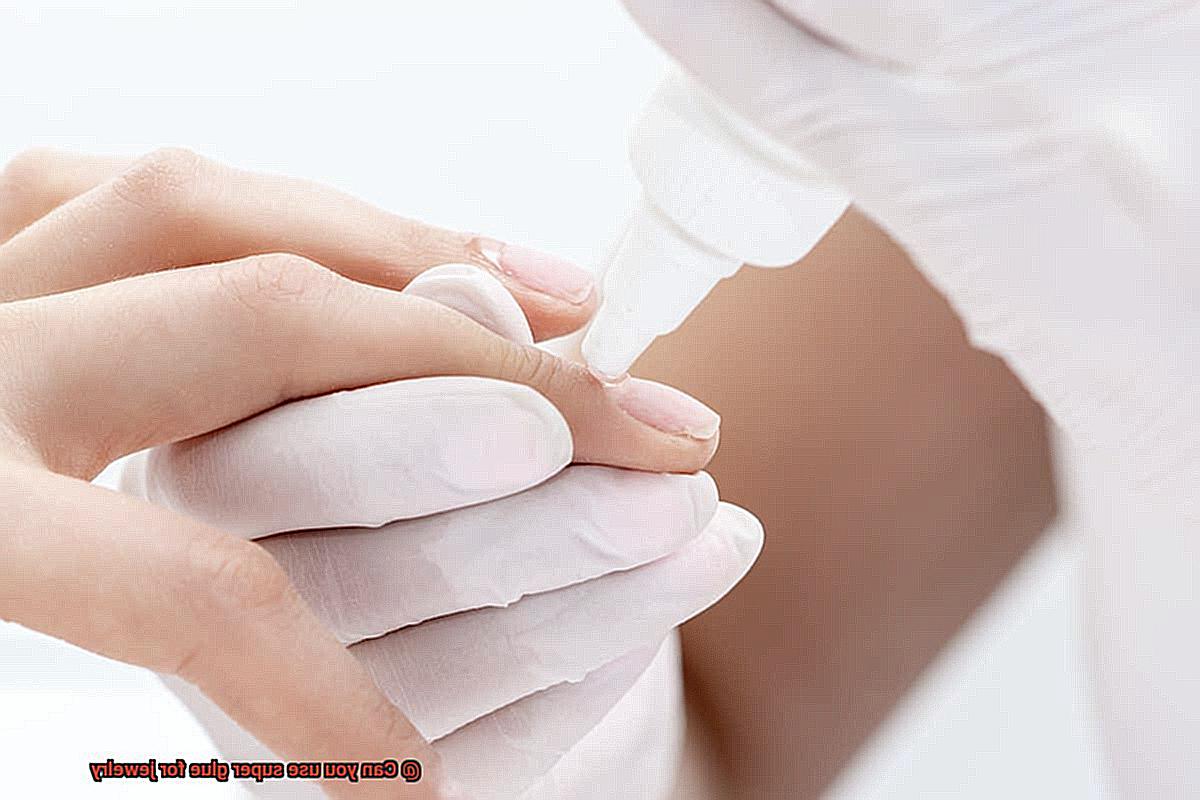
Different Types of Jewelry:
- Fine Jewelry: Exquisite and opulent pieces designed for special occasions, crafted with precision and using high-quality materials such as gold and gemstones.
- Costume Jewelry: Affordable and trendy accessories intended for everyday wear, often made from plastic, glass, or base metals.
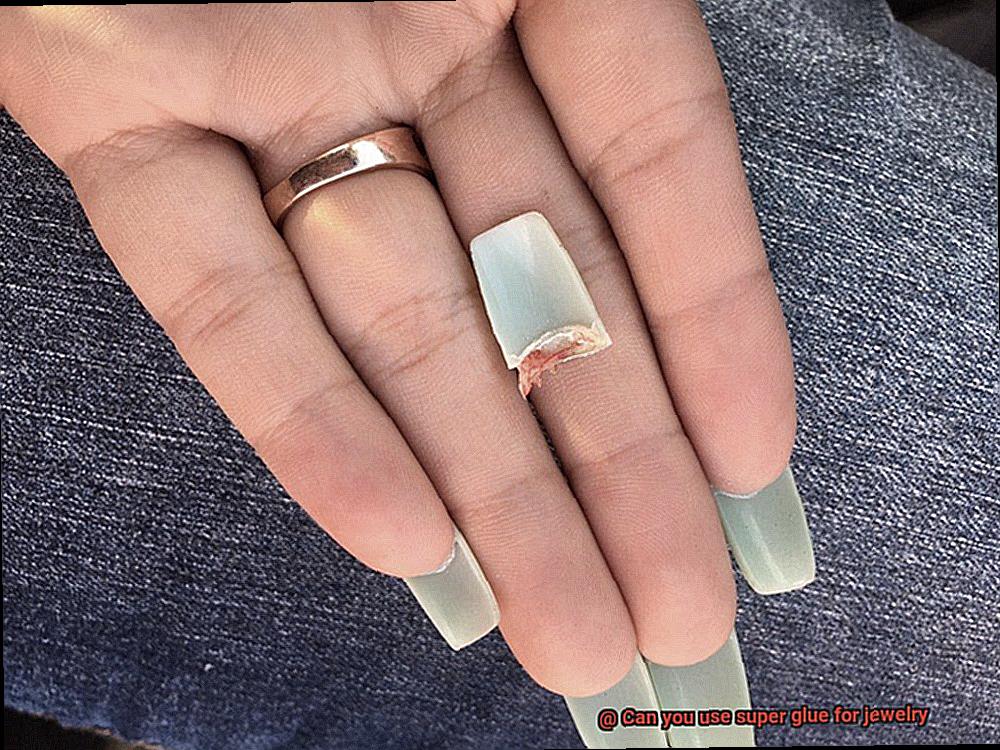
Material Considerations:
- Fine Jewelry: The epitome of elegance and luxury, these pieces demand meticulous care. The application of super glue may lead to irreversible damage or alteration in appearance.
- Gold may tarnish or lose its luster when exposed to certain adhesives.
- Gemstones may discolor or become dull due to chemical reactions with glue.
- Costume Jewelry: Versatile and affordable, these accessories can be enhanced temporarily using super glue for quick fixes or minor repairs.
- Plastic components may bond well with certain types of adhesives.
- Glass fragments can be secured temporarily until professional repair is sought.

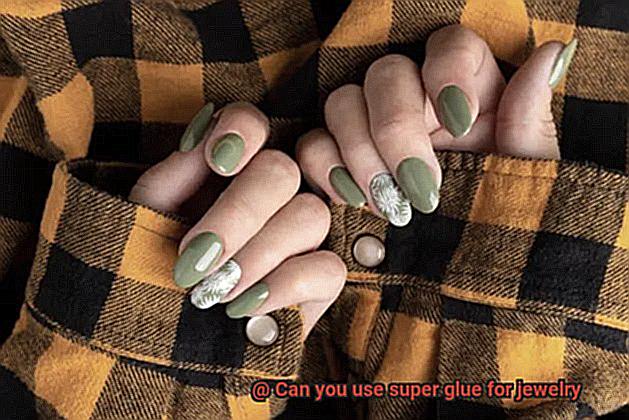
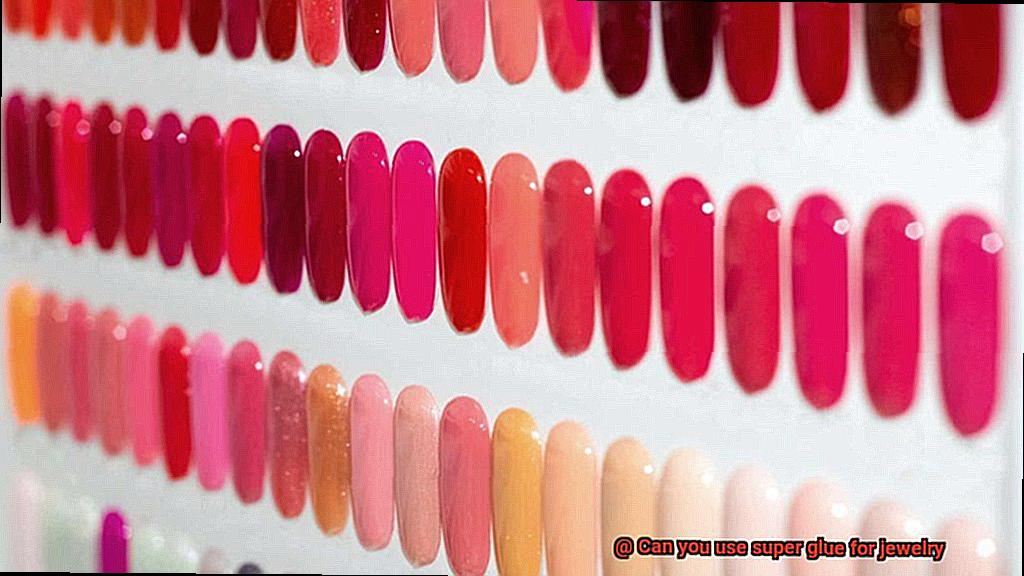
Temporary Solution:
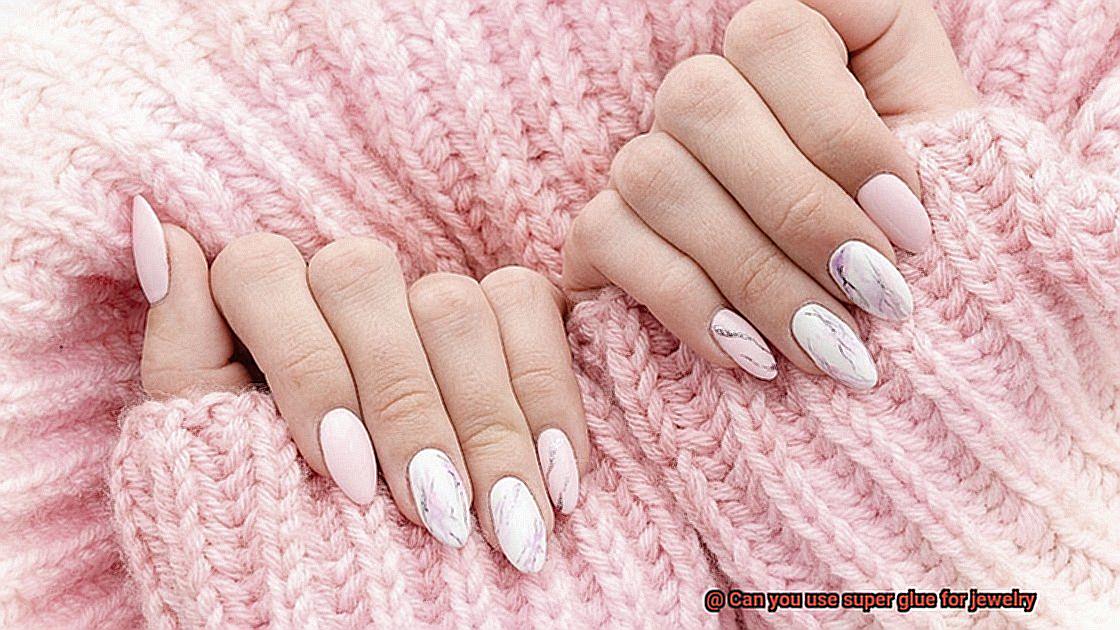
- While super glue may provide a quick fix for costume jewelry, it should only be considered temporary.
- Professional repairs by a skilled jeweler are strongly recommended for significant damage or structural problems to ensure a lasting solution.
Gemstones and Delicate Components:
- When dealing with jewelry adorned with gemstones or intricate components, consulting a professional jeweler is essential.
- Certain adhesives may negatively impact the gemstone’s clarity or brilliance.
- Delicate components, such as filigree work or intricate settings, require expert handling to prevent damage.
Preparing the Jewelry for Adhesive Application
Preparing jewelry for adhesive application is a crucial step to ensure a strong and long-lasting bond. The process involves several important steps:
- Clean the jewelry: Begin by using a mild detergent or soap with warm water to clean the jewelry. Gently scrub the surface using a soft brush or cloth to remove any dirt or residue. Rinse it thoroughly and pat it dry with a clean towel. A clean surface is essential for effective adhesive application.
- Inspect for loose parts: Carefully examine the jewelry for any loose stones or parts. If you find any, tighten them or repair any broken parts before applying adhesive. This will prevent them from coming off or causing damage once the glue is applied.
- Roughen the surface: Using sandpaper or a metal file, gently roughen the surface of the jewelry. Be cautious not to apply too much pressure or damage delicate parts. The goal is to create a slightly roughened surface that will enhance the adhesion of the glue.
- Remove dust and debris: After roughening the surface, use a soft brush or compressed air to remove any dust or debris that may have accumulated during the process. This ensures a clean surface for optimal adhesive bonding.
- Conduct a compatibility test: Before applying the adhesive, it is advisable to perform a small test on a hidden area of the jewelry. Apply a small amount of glue and observe how it reacts with the material. This helps determine if the adhesive is compatible and provides the desired bond strength without causing any damage.

Applying Super Glue to Jewelry
Have you ever found yourself staring at a broken chain, a loose stone, or a missing bead on your favorite piece of jewelry and wondered if super glue could come to the rescue? Well, my friend, you’re in luck. Super glue, also known as cyanoacrylate adhesive, can be your secret weapon in restoring your precious bling to its former glory. But before you unleash the power of this adhesive, let’s delve into the process of applying super glue to jewelry.
The first step is to consider the type of jewelry and the materials involved. Metal jewelry, such as gold, silver, or stainless steel, can generally be safely bonded with super glue. However, exercise caution when dealing with delicate or porous materials like pearls, gemstones, or certain types of beads. Super glue may not be the best choice for these beauties as it can damage or discolor them. When in doubt, it’s always wise to consult a professional jeweler for guidance.
Once you’ve determined that your jewelry is suitable for super glue, it’s time to prepare the surfaces for bonding. Cleanliness is key. Ensure that the surfaces are free from any dirt, oils, or residues that could hinder the bonding process. A quick wipe with rubbing alcohol should do the trick. For an even better bonding surface, consider lightly sanding the surfaces using fine-grit sandpaper. This will ensure maximum adhesion and longevity.
Now comes the exciting part – applying the glue. Remember, less is more. Start by applying a small amount of super glue to one surface of the jewelry. The goal is to have just enough glue to create a strong bond without excess oozing out and leaving visible residue on your precious piece. Once you’ve applied the glue, press the pieces together firmly for a few seconds. This allows the bond to form and ensures a secure attachment.
But hold on, there’s more to explore. If you want to elevate your jewelry game to the next level, consider specialized adhesives designed specifically for jewelry-making. These adhesives are formulated to handle the delicate nature of certain materials and provide an even stronger bond. So, if you’re working with something extra special or intricate, it might be worth exploring these alternatives.
Allowing Adequate Curing Time
Super glue possesses incredible adhesive properties that can work wonders in restoring broken jewelry.
However, to achieve a strong and durable bond, it is imperative to exercise caution and allow the glue sufficient time to cure.
Rushing the process or neglecting proper drying procedures can result in weak adhesion or even irreversible damage to your precious pieces. In this article, we will explore the reasons why allowing adequate curing time is crucial for successful jewelry adhesion.
The Importance of Proper Bonding:
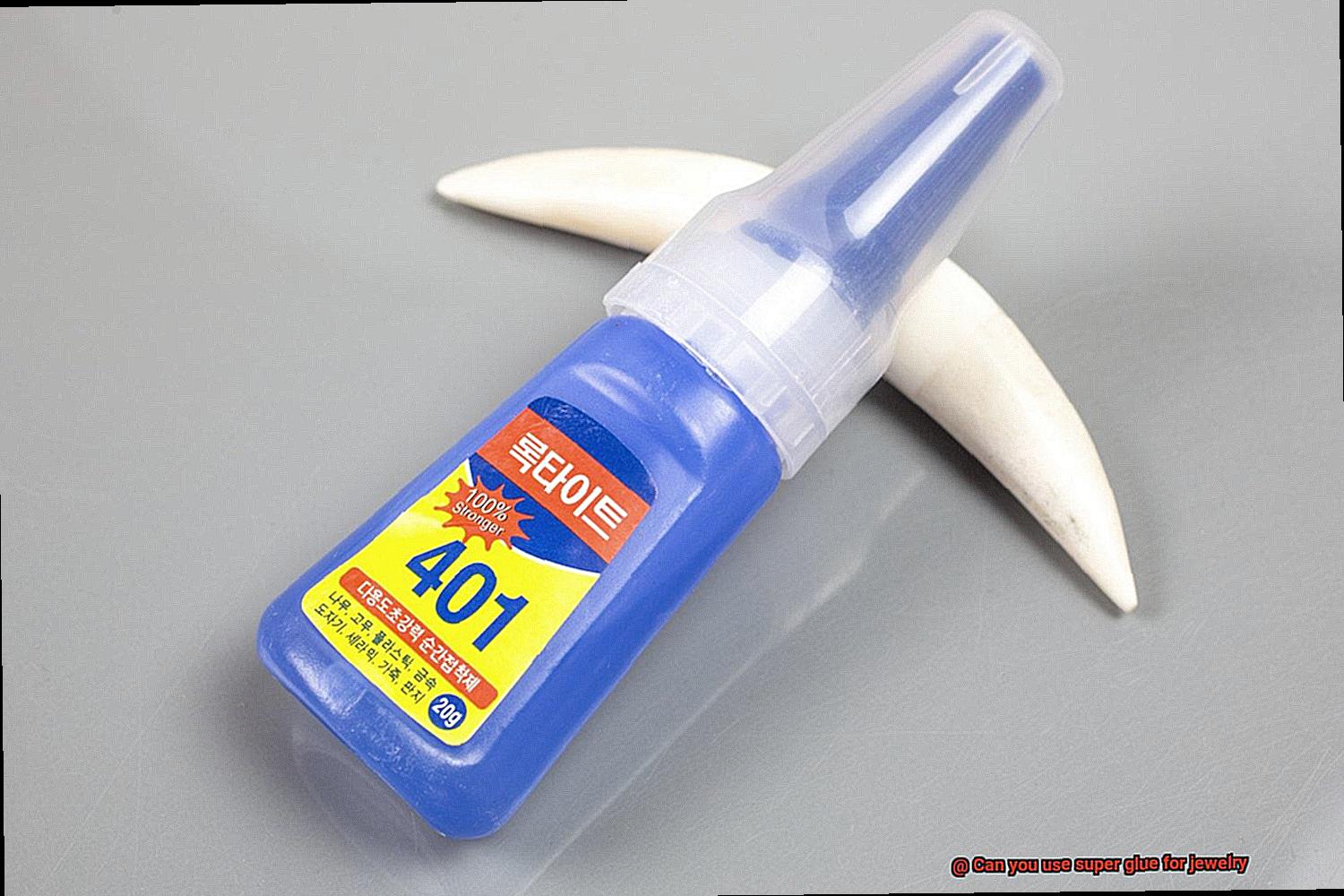
When it comes to using super glue for jewelry repairs, ensuring a secure attachment is of utmost importance. Allowing the glue to cure fully ensures a bond that can withstand the rigors of daily wear and prevents disappointment caused by premature separation.
Follow Manufacturer’s Instructions:
Different types of super glue have varying curing times. It is vital to read and meticulously follow the manufacturer’s instructions. These guidelines take into account the specific formulation of the glue, materials being bonded, and environmental conditions to ensure optimal results. Ignoring these instructions may compromise the strength and longevity of the bond.
Patience is Key:
While some fast-drying super glue formulas claim quick-setting times, they may not provide the same level of strength as glues with longer curing times. Waiting at least 24 hours for complete curing is generally recommended for most super glues. It may be tempting to wear or handle your repaired jewelry sooner, but patience is key to achieving a secure and long-lasting bond.
Avoid Movement and Stress:
During the curing process, it is essential to avoid any movement or stress on the glued jewelry. Premature manipulation or applying pressure can weaken the bond and potentially cause breakage. To ensure optimal results, set aside your repaired jewelry in a safe place and resist the temptation to wear it until the glue has fully cured.
Environmental Factors:
Environmental conditions, such as temperature and humidity, can significantly impact the drying time of super glue. Cold temperatures slow down the curing process, while warmer temperatures accelerate it. High humidity levels may also prolong drying time. To ensure optimal curing, work in a well-ventilated area with moderate temperature and humidity levels.
Pros and Cons of Using Super Glue on Jewelry
When it comes to repairing jewelry, using super glue can seem like an appealing option. However, before reaching for that trusty tube of cyanoacrylate adhesive, it’s important to understand the pros and cons. In this comprehensive guide, we will explore the advantages and disadvantages of using super glue on jewelry, helping you make an informed decision.
Pros:
Quick and Strong Bond:
Super glue is renowned for its ability to create a quick and strong bond. It dries rapidly, allowing you to repair broken pieces of jewelry without wasting precious time. The strength of the bond ensures that your repaired jewelry can withstand regular wear and tear.
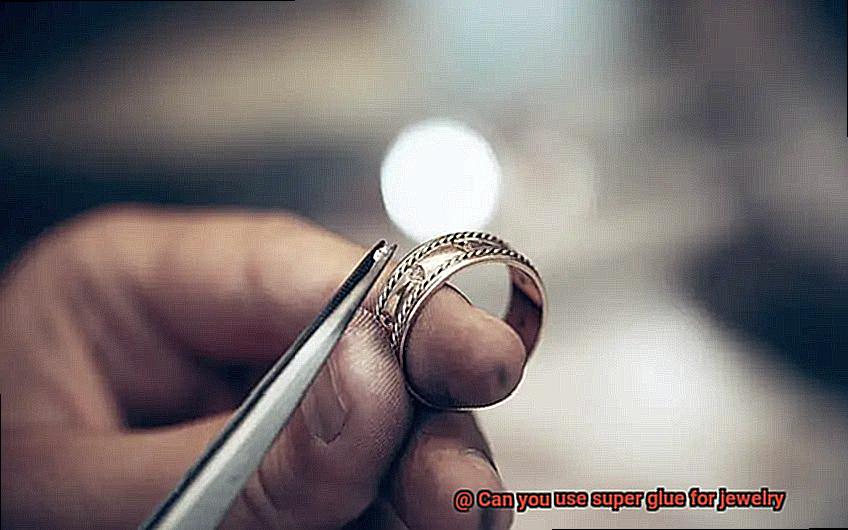
Versatility:
One of the greatest benefits of using super glue on jewelry is its versatility. It can be used on various materials commonly found in jewelry making, including metal, plastic, glass, ceramic, and certain gemstones. This versatility makes it a valuable tool for repairing different types of jewelry.
Cost-Effective:
Compared to other specialized adhesives, super glue is relatively inexpensive. This makes it an affordable choice for DIY enthusiasts or individuals on a budget. Furthermore, you can find it in most hardware stores or online, ensuring easy availability whenever you need it.
Cons:
Potential Damage to Delicate Materials:
While super glue works well on many materials, it can cause damage to delicate gemstones, pearls, or antique pieces. The chemicals present in super glue may lead to discoloration or other forms of damage. It’s crucial to exercise caution when using super glue on these sensitive materials and consider alternative adhesives if necessary.
Lack of Repositioning:
Once super glue sets, it forms a permanent bond that cannot be easily undone. This lack of repositioning can be problematic if you need to make adjustments or if you accidentally glue parts together incorrectly. Therefore, it’s essential to be precise and careful during the gluing process to avoid any irreversible mistakes.
Messiness and Aesthetic Concerns:
Super glue can be messy to work with, especially when excess glue seeps out from the bonded area. This can be particularly bothersome if you’re working with intricate or delicate jewelry designs. Additionally, the transparent nature of super glue may leave visible traces of adhesive, affecting the overall aesthetics of your jewelry piece. Consider using alternative adhesives that offer more precise application or are less likely to be noticeable.
Potential Health Hazards:
It’s important to note that super glue emits fumes that can irritate the eyes, nose, and throat. To minimize any potential health risks associated with using super glue, it’s crucial to use it in a well-ventilated area and avoid direct contact with skin or ingestion. Taking proper safety precautions will ensure your well-being while working with this adhesive.
Professional Assistance for Complex Repairs
When it comes to complex repairs, relying on professional assistance is not just a luxury, but a necessity. Whether it’s a delicate piece of jewelry or a valuable antique, attempting to fix it yourself or using subpar materials can lead to disastrous consequences. That’s why it’s essential to understand the importance of seeking professional help for complex repairs.
First and foremost, professional assistance is crucial because complex repairs require specialized knowledge and skills that only professionals possess. Professional jewelers, for example, have spent years honing their expertise in understanding the materials, techniques, and tools needed to repair jewelry effectively. They have the experience to assess the damage accurately and determine the most appropriate course of action.
Furthermore, professionals have access to a wide range of adhesives specifically designed for different types of repairs. These specialized adhesives provide strong and long-lasting bonds without causing any damage to the item being repaired. Unlike generic super glue, which may not provide the necessary strength or durability, these specialized adhesives ensure that your repaired piece can withstand everyday wear and tear.
In addition to proper adhesives, professionals also have the necessary tools to align and secure broken or loose pieces. Whether it’s a delicate necklace or a fragile antique vase, professionals can meticulously restore your item to its original design, ensuring a seamless repair that maintains its aesthetic appeal.
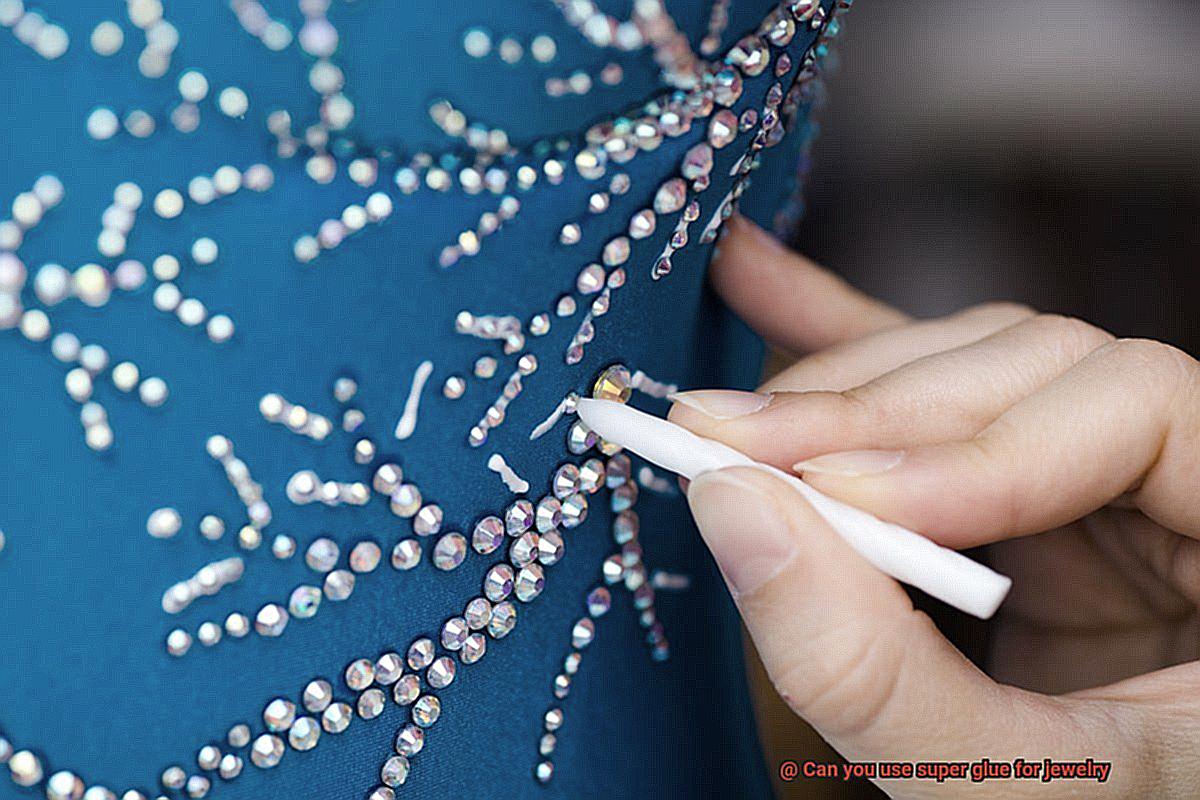
Seeking professional assistance also comes with the advantage of receiving guidance on how to prevent future damage or issues with your item. Professionals can offer recommendations on proper cleaning methods, storage techniques, and maintenance practices. By following their advice, you can prolong the lifespan of your precious items and minimize the need for future repairs.
Attempting complex repairs yourself or using subpar materials can lead to irreversible damage or even ruin the item altogether. This can result in additional costs and potential loss of sentimental or monetary value. By opting for professional assistance, you can have peace of mind knowing that your item is in capable hands.
Tips for Successful Super Glue Bonding
Today, we’re diving into the world of super glue bonding in jewelry-making. Whether you’re a beginner or an experienced crafter, these tips and techniques will help you achieve successful and secure bonds. Let’s get started.
Cleanliness is Key:
Before applying super glue, ensure your jewelry pieces are squeaky clean. Use a mild soap and warm water solution to gently scrub away any dirt or oils that can hinder the bond. Rinse thoroughly and dry completely before proceeding.
When it comes to super glue bonding, cleanliness is crucial. Any contaminants on the surfaces can prevent a strong bond from forming. To clean your jewelry pieces, use a mild soap and warm water solution.
Gently scrub the surfaces using a soft brush or cloth to remove any dirt, oils, or debris. Rinse thoroughly to remove any residue from the soap and make sure the surfaces are completely dry before applying the glue.
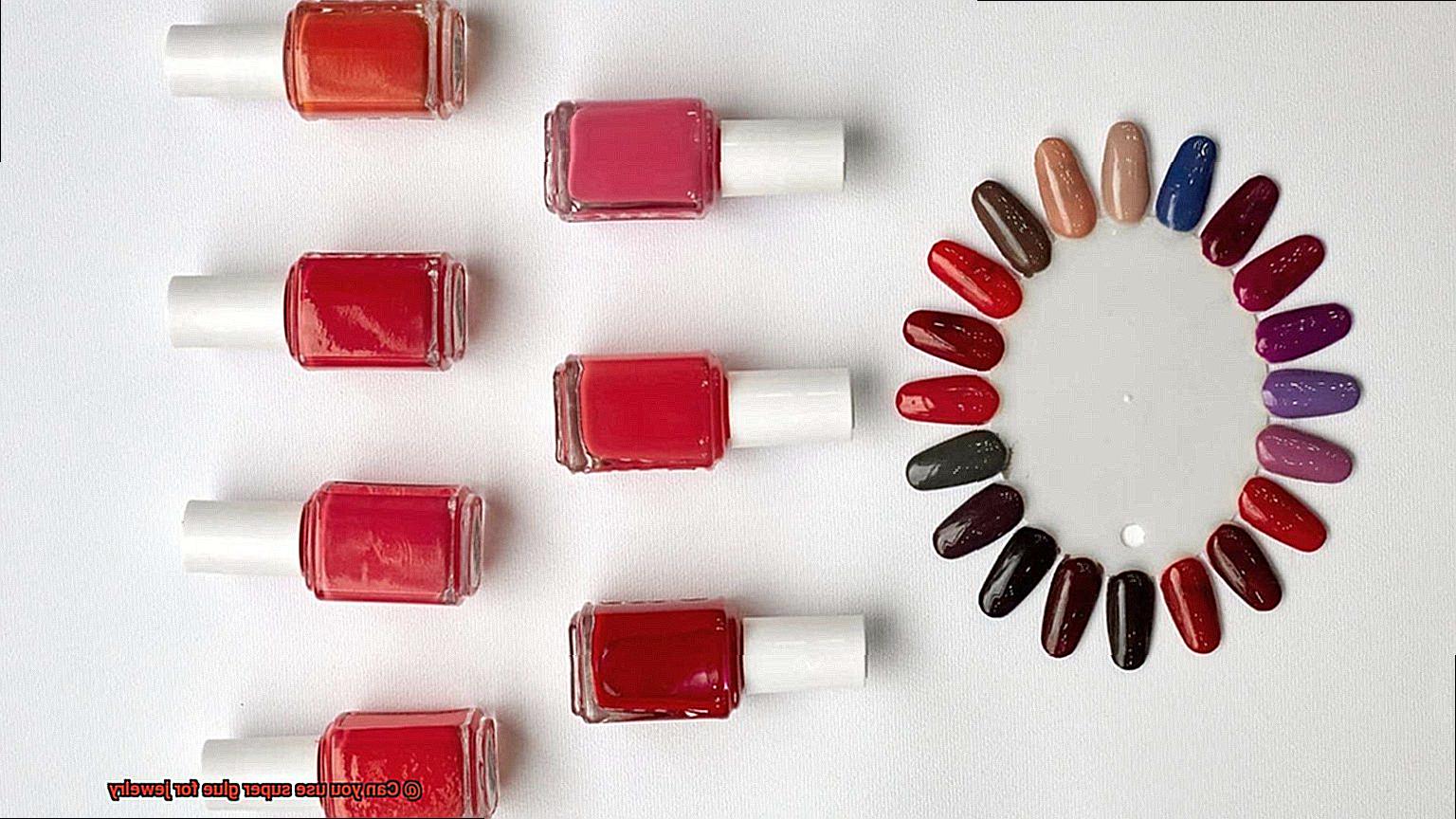
This will ensure that there are no barriers between the adhesive and the materials being bonded, allowing for a secure and long-lasting bond.
Less is More:
When it comes to super glue, a small amount goes a long way. Apply the adhesive sparingly to avoid excess glue oozing out. Precision applicators or toothpicks are your best friends for controlled application.
Super glue is known for its fast-drying and strong adhesive properties, but using too much can lead to messy and undesirable results. It’s important to apply the glue sparingly to avoid excess adhesive squeezing out when pressure is applied. A small drop or thin line of glue is usually sufficient for most bonding applications. To achieve precise application, consider using precision applicators or toothpicks. These tools allow you to control the amount and placement of the adhesive with ease, ensuring that you apply just enough glue for a secure bond without any excess spreading onto unwanted areas.
Perfect Alignment:

Take the time to align your jewelry pieces accurately before joining them with super glue. Once the adhesive sets, repositioning becomes tricky without damaging the pieces. Patience is key here.
Before applying the super glue, it’s important to ensure that your jewelry pieces are aligned correctly. Once the adhesive sets, repositioning becomes difficult and may result in damage to the pieces. Take your time to accurately align the jewelry components before applying the glue.
This may involve holding the pieces together and visually checking their alignment or using tools such as rulers or guides to ensure precise positioning. Patience is key during this process, as achieving perfect alignment will contribute to the overall quality and appearance of your finished jewelry piece.
Firm Pressure:
After applying super glue, apply firm and even pressure to the bonded jewelry pieces for a few minutes. Clamps, rubber bands, or even your fingers can hold them together during this crucial bonding period.
4J4y74iBnYI” >
Conclusion
In conclusion, using super glue for jewelry is not recommended.
While it may seem like a quick fix, super glue can damage delicate materials and leave behind unsightly residue. Instead, it’s best to use specialized jewelry adhesive that is specifically designed for bonding metals, gemstones, and other precious materials.
These adhesives are formulated to provide a strong and long-lasting bond without causing any harm to your valuable pieces.

